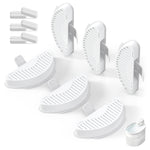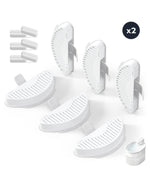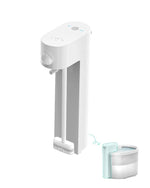For pet owners, the joy of having a furry companion often comes with the challenge of managing pet hair. From furniture to clothing, pet hair seems to find its way into every corner of the home. But what about the air we breathe? Can air purifiers help tackle the issue of pet hair in the air? This article dives into the effectiveness of air purifiers for pet hair, exploring how they work, their benefits, and what to consider when choosing one.
Understanding the Problem: Pet Hair and Air Quality
Pet hair is more than just a nuisance; it can also impact indoor air quality. When pets shed, their hair becomes airborne, mixing with dust, dander, and other allergens. This combination can trigger allergies, asthma, and other respiratory issues, especially for sensitive individuals. While vacuuming and cleaning surfaces can help, these methods often miss the microscopic particles that linger in the air. This is where air purifiers come into play.
How Do Air Purifiers Work?
Air purifiers are designed to improve indoor air quality by removing pollutants, allergens, and particles from the air. Most air purifiers use a combination of filters and technologies to capture and neutralize contaminants. The primary components include:
- Pre-Filters: These capture larger particles like pet hair and dust, preventing them from clogging the main filter.
- HEPA Filters: High-Efficiency Particulate Air (HEPA) filters are highly effective at trapping microscopic particles, including pet dander and allergens.
- Activated Carbon Filters: These filters target odors and volatile organic compounds (VOCs), which can be particularly useful for homes with pets.
- Ionizers and UV-C Light: Some air purifiers use additional technologies to neutralize bacteria, viruses, and other pathogens.
Do Air Purifiers Effectively Capture Pet Hair?
While air purifiers are not specifically designed to capture pet hair, they can still play a significant role in managing it. The pre-filter in most air purifiers is effective at trapping larger particles like pet hair, preventing them from circulating in the air. However, the real benefit lies in the HEPA filter, which captures the microscopic particles associated with pet hair, such as dander and allergens. By reducing these particles, air purifiers can help create a cleaner and healthier indoor environment.
Benefits of Using Air Purifiers for Pet Hair
Using an air purifier in a home with pets offers several benefits:
- Improved Air Quality: Air purifiers reduce the concentration of pet hair, dander, and allergens in the air, making it easier to breathe.
- Allergy Relief: For individuals with pet allergies, air purifiers can significantly reduce symptoms by removing allergens from the air.
- Odor Control: Activated carbon filters help eliminate pet odors, keeping the home smelling fresh.
- Reduced Cleaning Frequency: By capturing airborne particles, air purifiers can reduce the amount of pet hair that settles on surfaces, making cleaning less frequent.
What to Consider When Choosing an Air Purifier for Pet Hair
Not all air purifiers are created equal, and choosing the right one for pet hair requires careful consideration. Here are some factors to keep in mind:
- Filter Type: Look for an air purifier with a HEPA filter and a pre-filter for optimal performance.
- Room Size: Ensure the air purifier is suitable for the size of the room where it will be used.
- Noise Level: Some air purifiers can be noisy, so consider the noise level if you plan to use it in a bedroom or living area.
- Maintenance: Regular filter replacement is essential for maintaining effectiveness, so factor in the cost and availability of replacement filters.
- Additional Features: Features like air quality sensors, timers, and remote controls can enhance convenience and usability.
Limitations of Air Purifiers for Pet Hair
While air purifiers can be highly effective, they are not a complete solution for managing pet hair. Here are some limitations to be aware of:
- Surface Hair: Air purifiers only address airborne particles and do not remove pet hair from surfaces like furniture or floors.
- Regular Cleaning: Air purifiers should be used in conjunction with regular cleaning practices to maintain a hair-free environment.
- Initial Cost: High-quality air purifiers can be expensive, and ongoing maintenance costs should also be considered.
Tips for Maximizing the Effectiveness of Air Purifiers
To get the most out of your air purifier, follow these tips:
- Placement: Position the air purifier in a central location where it can circulate air effectively.
- Run Continuously: For best results, run the air purifier continuously, especially in high-traffic areas or rooms where pets spend most of their time.
- Regular Maintenance: Clean or replace filters as recommended by the manufacturer to ensure optimal performance.
- Combine with Other Methods: Use air purifiers alongside regular vacuuming, grooming, and cleaning to tackle pet hair from all angles.
Air purifiers can be a valuable tool for pet owners looking to improve indoor air quality and manage pet hair. While they may not eliminate the need for regular cleaning, they can significantly reduce airborne particles, allergens, and odors, creating a healthier and more comfortable living environment. By understanding how air purifiers work and choosing the right one for your needs, you can enjoy the benefits of cleaner air and a happier home with your furry friends.












